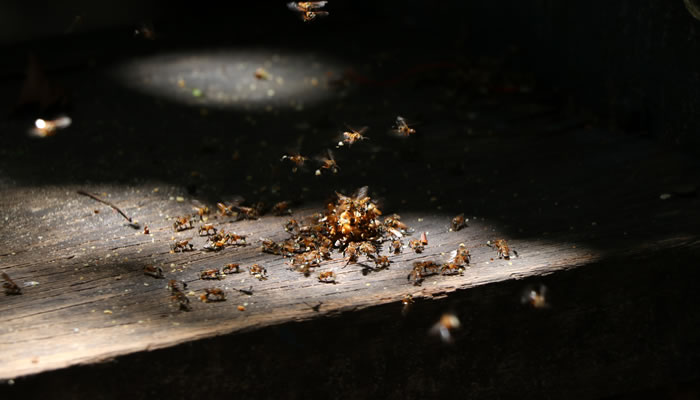We all get the munchies from time to time. For us humans, the consequences of overly-enthusiastic snacking might necessitate loosening our belt a few notches, and vowing to turn to the fruit drawer “next time.” For a resilient group of little pests, however, the cost of their hearty appetites is much higher. So high, in fact, that termite damage causes an average of $5 billion worth of damage every year in the United States alone. We’re talking about those tiny pillagers, the dreaded termites. While they’ll eat wood (bad!), and attack other insects (good!), at least they don’t bite humans…our structures and wallets tend to be their victims instead.
With approximately 50 different species active in the US today—there are over 2,000 species worldwide—termites are one of the most insidious threats to households across the country. Only Alaska gets a pass, thanks to its frigid climate, which is unsympathetic to the cold-blooded insects. There are several different groupings of termite species, each of which require the right balance of temperature and moisture to survive.
Most of the time, termites need to have direct contact with soil to maintain their colonies’ moisture levels. Sometimes, though, in the case of the dry-wood group, for example, they can glean enough moisture from the wood that they eat, due to the way their bodies metabolize the cellulose. On the other hand, Formosan termites, probably
The most destructive subterranean species in the US, have a way of building pockets of chewed wood, soil and undigested cellulose within their colonies’ network of tunnels, that essentially conserve moisture within those pockets, or “cartons,” until they can find a new water source. Their underground activity does benefit the environment, in that it aerates and enriches the soil, but termites are not generally considered welcome guests once their more nefarious deeds are discovered.
Unfortunately, due to termites’ cryptobiotic tendencies (meaning, their activities are hidden from view), occupants don’t always realize that their home or building has been infested until it’s too late. So if termites are known to have a habit of concealing themselves while they do their dirty work, how can homeowners learn to detect the pests before severe damage has been inflicted on their property?
Luckily, there are a number of clues that betray the presence of termites, and keeping a watchful eye can help you take them down…before the little critters take down your deck:
- Sagging floor or ceiling – Termites are generally known for eating wood. However, their diets are more diverse than that. They’ll chew through sand, clay, plaster, and anything made of cellulose, including cloth, paper and carpets. Since they work from the inside out, you won’t always see signs of their presence until they’ve already destroyed some of the internal structural integrity of their targets.
- Mud tunnels near a structure’s foundation – As we mentioned above, most termites require direct contact with the soil. Subterranean termites burrow narrow mud tubes that help them conserve moisture, protect them from predators, and serve as a bridge between the colonies and their feeding grounds—namely, the wood and other materials that they’re consuming inside a particular structure.
- “Winged swarmers” – If you have a swarm of termites in your vicinity, chances are, they’ve already wreaked their havoc, as it takes a new colony a few years to reach the size at which some of its members develop into the winged termites that swarm out of the nest through the mud tubes. You might miss them if you’re not outside at the time of the swarm, but indoors, they are most likely to be noticed near light fixtures and windows, as these insects are attracted to light.
- Discarded wings scattered on windowsills or stuck in spider webs may also be a sign that a swarm has passed through. To tell whether any winged creatures you see are termites or flying ants, take a look at their waists, antennae, and wings. Flying ants have pinched waists, bent antennas, and 2 pairs of wings, one smaller than the other. They do not shed their wings. Termites, on the other hand, have a fairly uniform body width, short, straight antennae, and 2 identical pairs of wings, which they shed soon after they swarm out of their nests.
- Termite droppings – Termites leave behind piles of small, wood-colored fecal pellets, called “frass,” which are often the most noticeable sign of the invaders’ presence. The frass mounds are usually found beneath holes or within smoothed out “galleries” left between the grains in the infested wood.
If you notice evidence of any of the above, contact a local pest control service immediately and have them come by to assess the damage and decide which kind of treatment would be most effective in getting rid of any infestation. Most of the time, you’ll need to destroy the colony with insecticides, and then ensure that you obstruct their means of access to your property. Pest control professionals can also help you identify all the trouble spots, some of which might be hidden from view, so that you can formulate a plan of action for repairing any damage.
They might even be able to suggest preventative measures to thwart future infestations, such as keeping mulch and firewood a certain distance away from the foundation of the house. Since most homeowners’ insurance policies do not cover termite issues, early detection and prompt, professional treatment are imperative for preventing extensive and costly termite-inflicted loss.




